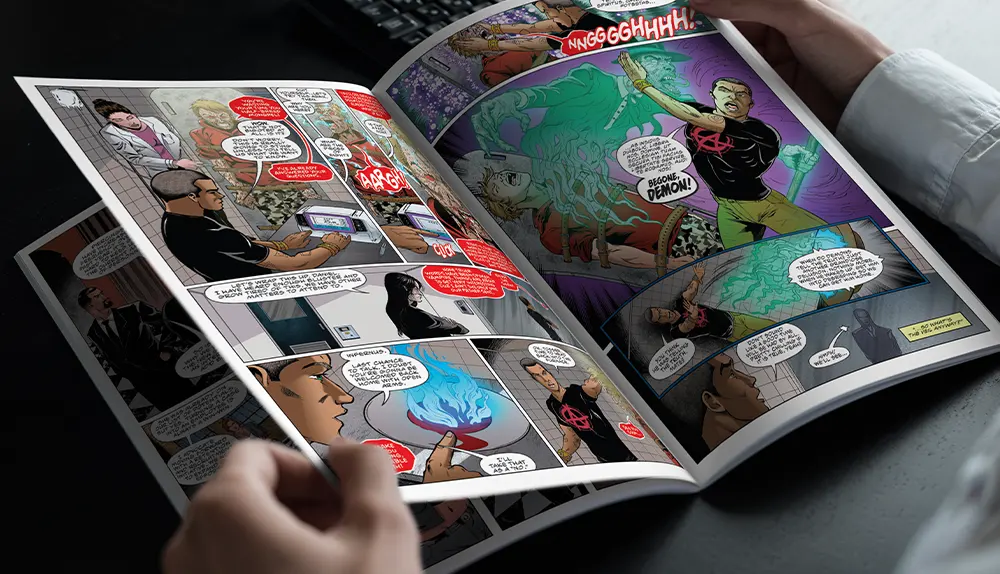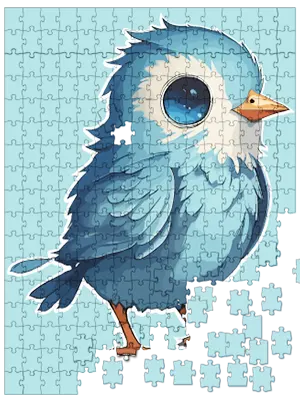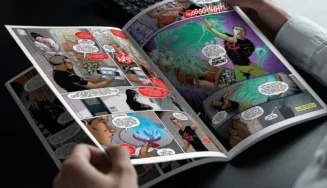We teach you the most important thing to know before you write a comic book and the quickest way to get started

Comic Book Printed by QinPrinting
The first goal of every comic book
Comics are a narrative medium that combines strong visual images and supporting text to tell a story. Lots of fans want to make their own comic books. But the difficulty — even if you've read thousands of comics and developed a unique and captivating drawing style — is that once you sit down to start, you don't know how to begin writing a comic book. Reading comic books and writing are quite different things!
While you must read and enjoy comic books if you want to write them, writing them involves specialist knowledge and skills. So, in this post, we're going to take you through the fundamentals that you need to take the first vital step toward creating a comic book that people will want to buy and read.
The first goal of every comic book writer isn't to introduce their snazzy hero or heroine character; it's not to set the scene, either; and it's not even to get the story rolling. So, what is it? To answer that, think about why you enjoy reading the comic books that you love.
Sure, you have favorite characters and settings; you love the artist's style and the composition of the panels; you just love reading your favorite comics because… why?
Well, here's the thing. The characters, the plot, the setting, the dialogue, the artwork, the layout; these all matter. These are the tools that the comic book creator — or the writer/artist team — used to captivate you. But in themselves, they're not what the comic book is about. If they were, then every comic book with characters, a setting, a plot, and beautiful artwork would be wildly famous and all comics would be as good as each other. But they're not. And here's why.
When you read a comic book — or go to the movies, play a game, read a regular novel, or see a show — you want to feel a powerful emotional response. It's the opposite of being bored. Have you ever started a comic that wasn't up to much and set it aside, saying, “I didn't like it. It was boring.” What that means — that it was boring — is that it didn't engage your emotions. When you read a comic book, you want to feel excitement, tension, fear, anxiety, happiness, intrigue, joy, passion. That's what makes a good comic: the emotional ride on which it takes the reader. If that ride's a rollercoaster, all the better!
So, when you're thinking about how to begin writing a comic book, your goal should be to use all the storytelling tools at your disposal — character, setting, plot, artwork, dialogue, etc., — to provoke as strong an emotional response in your reader as possible. Focus on making them feel. Make them laugh, make them cry, keep them on the edge of their seat, keep them turning the pages because they're caught up in a maelstrom of emotions.
That's the key to any good story. And it's the key to a good comic, too. So, now let's look at how to begin writing a comic book by boiling the entire process down to the essentials.
At-a-Glance Summary
- Key Goal: Evoke powerful emotional responses in readers.
- Essential Structure: Protagonist desires something deeply, faces strong opposition, struggles through escalating challenges, and ultimately succeeds or learns a critical lesson.
- Starting Point: Define a clear, compelling, one-sentence summary:
- Protagonist + Desire + Motive vs. Antagonist + Motive + Conflict
- Core Focus: Engage emotions—excitement, fear, joy, tension.
- Next Steps: Flesh out character motives, scene details, create a storyboard, design final panels, and prepare for printing.
How to begin writing a comic book
Now you know your core aim in writing a comic book — in telling any story in any medium, in fact — is to provoke a powerful emotional response in the reader and keep them turning those pages until they get to the end. But how do you do that? Here's how. Read this next sentence with great care:
Make a character we care about, driven by a deep need, struggle to overcome a series of increasingly challenging obstacles until it seems all is lost, when they finally achieve their burning desire.
That, in a nutshell, is every good story ever told. The only exception is in a tragedy, when the protagonist cannot achieve their burning desire but learns an important lesson on the way. So, the first thing to do before you plan out a detailed plot or start drawing, is to get this one-sentence structure down. You can use the following template and “fill in the blanks” with your own ideas:
[Name of protagonist] a [who they are/what they do] has a burning desire to [their goal] because [their motive] but [name of the antagonist] a [who they are/what they do] wants to stop them because [antagonist's motive] and will stop at nothing to destroy [protagonist] and [antagonist's goal]
So, here's an example of how you can do this:
[Jack Seeger] a [an ex-con on parole] has a burning desire to [free himself from his criminal past and start a new life] because [he wants to ask his girlfriend, Sonja, to marry him, settle down, and start a family] but Don Caruso [an infamous and brutal Mafia boss] wants to stop him because [Jack bought his freedom by snitching on the gang] and will stop at nothing to [destroy Jack and exact his revenge].
That's just one possibility. You can fill in the blanks in infinite numbers of ways. Go on, try it! Using this tool, you can create a comedic story to provoke laughs, a high-tension drama, a romance, a dark crime mystery, a superhero tale, a fantasy adventure… any genre of story you like. Experiment with lots of possibilities, then pick one that really excites you, and run with that.
You'll find that this a fun way to make sure that you've got a plot summary that covers all the principal ingredients to get your comic book story started: a protagonist with a burning desire for something important; an antagonist who wants to stop them from achieving that desire; and the set-up for a series of conflicts, obstacles, and struggles between the protagonist and the antagonist, which will push the protagonist to their limits before they finally achieve their goal.
That's the essential plot structure which will keep your readers' emotions alight as they empathize with your hero or heroine, experience anxiety about the increasingly difficult struggles they face, hope that they may yet overcome, feel anger and sadness when they seem to be defeated, and joy and triumph when they finally win the day.
Next steps to making a comic book story
Now you have your emotion-provoking plot figured out in a single sentence, write it or print it out and stick up somewhere you'll always see it as you work on the rest of your comic book writing and artwork. That's your story concept. Whenever you get stuck or your plot is losing its way, return to that core outline and ask yourself, “Is what I'm doing now — writing a scene, designing a panel, working out captions — helping to tell this story? Does it show this protagonist or antagonist's motive? Will it highlight the conflict between them and reveal character? Does it take the hero/heroine one step closer to their goal? It's a great way to keep your plot and your story on track.
There's a lot more to learn about how to make a comic book. But the first thing you need is a story concept; and a story concept that will give you a sympathetic character who desperately wants something that they will need to struggle hard to achieve against an antagonist who desperately doesn't want them to achieve it.
And that, in a nutshell, is how to begin writing a comic book. The next steps are to work out the details of your characters' motives and personalities, plan out the individual scenes, work out how it's all going to end, create a storyboard, select the final panels and order them, draw them, ink them, digitize them, create a cover, put it all together using software such as Illustrator or InDesign, get them print ready, and send them to us to print.
FAQs
Identify your protagonist's deep desire, their reason for it, who opposes them, and why.
Emotions keep readers engaged, ensuring they stay interested and invested in your story.
Use the one-sentence structure: protagonist with desire and motive vs. antagonist with opposing motive and conflict.
Yes, you can adapt it to comedy, romance, superhero stories, mysteries, fantasy adventures, and more.
Refer back to your one-sentence plot summary to realign your focus and keep the story cohesive.
It should clearly capture the protagonist, their desire, the antagonist, and the core conflict in a single concise sentence.
Finalize character motives, detailed scenes, storyboarding, and illustration before digitizing your comic for printing with professional services like QinPrinting.
Talk to us. We can help!
When you get to that stage — when you're ready to print your comic book — let's talk! At QinPrinting, we love comics and we've been helping independent creatives just like you get started in comic book publishing, either as a hobby or as a business, for over 25 years.
We've a whole range of tools and printing options to make your comic as stunning and professional as you could ever hope, and we have a genuine commitment to every project and every person behind every project. So, get in touch to discuss your needs; or if you're further down the line, to get a quote on how much it will cost to print your comic book.
Just shoot us an email to [email protected] or call us on +1 951 866 3971 and we'll be delighted to do all we can to help you. We love comics just like you do, and we can't wait to help bring another amazing story to life — yours!






